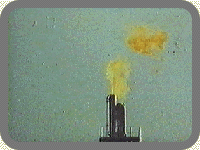 |

|
 Harun Farocki,
|
In his audiovisual essay on the
ideological implications of the very first film to be
projected, Harun Farocki employs his favourite method,
which he himself calls "editing from the ear to the
eye". Sortie d'usine (1895) by the Lumière
brothers is the focal point of this examination of the
presence of the factory in film history. Or rather, the
absence, since as mass-production increased, places of
work cropped up less and less in the stocks of historical images.
However, as Farocki is able to show using a large amount
of found footage, the factory gates form a rewarding
rhetorical image and a location with its own
"mise-en-scène". The workers appear there en
masse, as a class onto which various ideologies can be
projected. With some music in the background and the
right narrator's voice, one day they are called the
industrial proletariat and the next the working
(cheerfully consuming) masses. But whether Farocki's
demonstration material comes from an industrial film, a
documentary or a feature film, the images repeatedly
reveal one certainty : when the worker leaves the
factory, he turns his back on his work. A wide-ranging
analysis of 45
seconds of ethnographic film which from the very
beginning proved the film cameras qualities of
surveillance.
|
Bambule |
Heintje |
November Days |
Berlin |
Deutschland Trilogy |
Der Reise |
Combats au Kurdistan d'Iran |
Deutschland Privat |
 |
|
|
|
 |